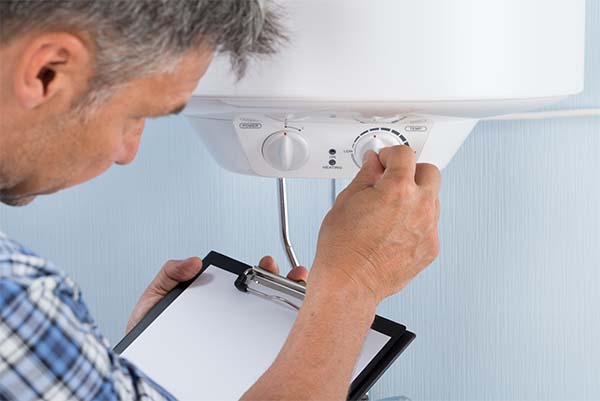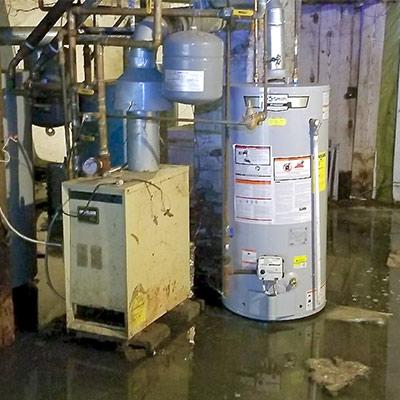Key Actions for Home Owners When Broken Heating Units
Key Actions for Home Owners When Broken Heating Units
Blog Article
What're your concepts about What Do You Do When Your Water Heater Bursts??

Whether it is situated in the cellar or a separate room, busted water heating units can cause stress. Having no warm water supply is likewise troublesome.
Call the Plumber
After doing the initial 2 safety steps, you should call your plumber to come right away to take care of a burst water heating system. There are generally indicators that your aging water heating system has debris build-up in the inside.
Instead, as quickly as you identify these indicators, have a professional come to evaluate your water heating unit container. Usually, water heaters have a life-span of about 8 to 12 years.
Cut Off the Cold Water Supply
Cut off the containers tap water supply from the resource. When your container is in excellent problem, the cold water quits filling up when the container is complete. If you can not locate it or reach it, you need to turn off that major water supply line outside your property.
Shut Down Power Source
Prior to calling the plumber, shut off a gas hot water heater by turning the temperature level dial. This is usually situated at the top of the thermostat. Switch off the circuit breaker if you have a design that runs on electrical power. This will certainly stop electrocution, specifically if there is a leakage as water is a conductor. Generally, the heating element shuts off when the water hits a particular temperature. But with a broken container, it might malfunction. Cutting it off assures you remain secure.
Tidy up Home
After calling the plumber, record damages by taking notes as well as photos so you can assert your homeowner's insurance policy. From there, start the instant cleanup. Take out any important items to stop additional soaking. Remove any standing water to avoid mold as well as mildew growth. Utilize that to drain pipes the water if you have a submersible water pump. Otherwise, the conventional container technique will also work. Attempt to wipe out whatever, including wall surfaces and walls. If you have an electric follower as well as dehumidifier, maintain them running to maintain air distributing. This will aid deter mold and mildew development.
Bear in mind, if you discover any kind of problems with your water heating unit, call the pros right away. You can not take this problem gently due to the fact that a malfunctioning thermostat can raise water temperature to a precariously high level, leading to unintended burns.
After doing the first 2 safety actions, you should call your plumber to come right away to deal with a ruptured water heating unit. Rather, as quickly as you spot these indications, have actually an expert come to evaluate your water heater storage tank. Prior to calling the plumber, closed off a gas water heater by turning the temperature level dial. If you have a completely submersible water pump, make use of that to drain the water. Remember, if you discover any type of concerns with your water heating system, call the pros right away.
8 REASONS YOUR HOT WATER HEATER IS NOT WORKING & HOW TO FIX
Water Heater Problems & Solutions
Loose or Damaged In-Line Valve
Unlike a water leak near the bottom of your water tank, a water leak on top of your system can be easily fixed. A common cause of water tank leaks includes a loose in-line valve. This is a handle that is located at the top of the water tank that is engineered to activate or deactivate the flow of water. To fix this problem, you will need to secure the nut that holds the ball or in-line valve in its location. If the leak becomes more severe once it is tightened, you will be required to travel to your local hardware store to purchase a new in-line valve for your water heater.
Damaged Pressure Relief Valve
Most types of water heaters are equipped with a pressure relief valve that is engineered to discharge pressure from the water tank when it becomes too high. If this valve on top of your water heater begins to leak, we recommend purchasing a new one online or from your local store. The process of removing and replacing pressure relief valves is not complicated.
No Warm Water
If you have an electric water heater in your home, the most typical cause of a lack of warm water is a broken heating element. Your water heater is equipped with two heating elements that are tasked with heating incoming water in the water tank. Once a heating element begins to malfunction, you will have little to no hot water to use for showering, cleaning, and laundry.
Low Supply of Hot Water
Are you continuously running out of warm water? This issue may be a byproduct of a cracked dip tube. This tube is engineered to push cold water to the base of your water tank to be heated. Once a crack or hole begins to form in the dip tube, the incoming supply of cold water may be released near the top or middle of your tank. As a result, the cold water on top of the tank will be sent to the faucets and showers in your house. This hot water heater problem can only be fixed by replacing the dip tube on your system. Since the process of installing a new dip tube is complex, we recommend calling a certified technician for help.
A low supply of warm water may also be a signal of excess sediment buildup in your water tank. As your water heater reaches the middle of its life cycle, minerals in water including magnesium and calcium will begin to collect at the base of the water tank. As the minerals continue to grow, there will be less room in the water tank to store hot water. To resolve this problem, flush your water heater to remove the excess minerals.
Water is Too Warm or Cold
If the water in your shower feels uncomfortable hot or cold, you can adjust the temperature of your water by changing the settings on your thermostat. Setting the temperature to 120 degrees Fahrenheit may help you save money on your utility bills. This is an excellent temperature to use if you’re worried about scalding or skin irritation. Does this temperature feel too cold? You may also adjust the thermostat to 140 degrees Fahrenheit to make your showers more pleasant. If your hot water heater is not working when you change the temperature, this is an indicator of a broken thermostat. Immediately find a certified plumbing or heating contractor in your area to repair or replace your thermostat.
Low Water Pressure
Low water pressure is not always caused by a malfunctioning water heater. If you live in an older home with smaller water pipes, the flow of water will be restricted prior to reaching our kitchen or bathroom skins. The only way to eliminate this hot water heater problem is to connect new ¾-inch water lines to your system. Another type of problem that may negatively impact your water pressure includes calcium deposits in water pipes.
As magnesium and calcium begin to form in your pipes, the diameter of your water lines will become smaller. As a result, the warm water from your water heater will not be able to travel in an efficient manner to your sinks or appliances. Since the process of replacing water pipes includes removing drywall, an average homeowner that does not have a plumbing license will not be able to fix this hot water heater problem.
https://www.wmhendersoninc.com/blog/8-reasons-your-water-heater-is-not-working-how-to-fix/

We were shown that article on Water Heater Burst through a friend on another web page. Kindly take the time to distribute this blog posting if you liked it. I cherish reading our article about Broken Water Heaters.
Contact for quality! Report this page